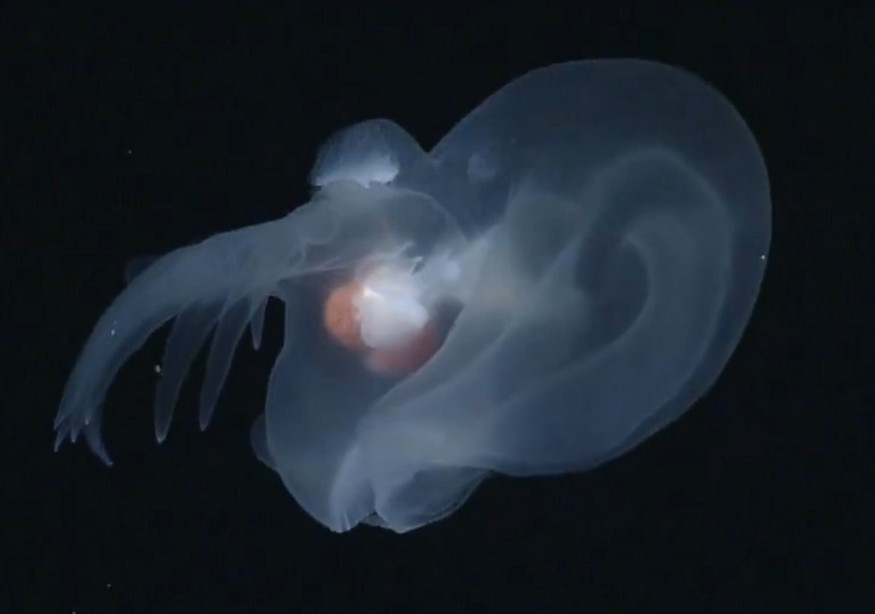
Deep in the dark, crushing depths of the Pacific Ocean, scientists have made a remarkable discovery: a glowing sea slug that swims freely in open water, unlike most of its relatives.
Known as Bathydevius caudactylus, this new species of nudibranch was found more than 2,200 meters (about 7,220 feet) below the ocean's surface, in a zone where sunlight cannot reach.
Bioluminescent Nudibranch Thrives in Earth's Most Extreme Ocean Depths
Unlike typical nudibranchs that crawl along shallow seafloors or reefs, Bathydevius caudactylus floats in the cold, high-pressure environment of the bathypelagic zone. Scientists from the Monterey Bay Aquarium Research Institute (MBARI) observed the creature during deep-sea explorations using remotely operated vehicles (ROVs).
It caught their attention with its glowing body and unique features, including a large, hood-like structure and a fringe-like tail.
When approached, the nudibranch displayed a surprising defense mechanism. It lit up with a bioluminescent glow, and in one instance, released a glowing part of its tail to distract potential predators-similar to how lizards shed their tails when threatened.
This behavior helps the creature survive in a region of the ocean where food is scarce and danger is ever-present.
The scientists studied 157 individuals of this species over two decades, collecting 18 specimens for closer examination, NY Times said.
Their research revealed that this nudibranch is so different from others that it belongs to an entirely new family called Bathydeviidae. The name reflects its habitat in the deep ocean (from the Greek word "bathys") and the challenges it posed to researchers trying to identify it.
Unlike its shallow-water relatives, Bathydevius caudactylus uses its large hood to capture prey, primarily crustaceans, and lacks the raspy feeding organ typical of many other nudibranchs.
Monterey Canyon's Glowing Nudibranch Offers New Clues to Deep-Sea Ecosystems
The creature is also hermaphroditic, meaning it has both male and female reproductive organs.
According to Science Alert, researchers observed the nudibranch laying ribbons of eggs on the seafloor, a behavior that may improve the chances of survival for its offspring in the vastness of the deep sea.
Measuring up to six inches long, this glowing slug has been spotted from Oregon to Southern California, often in Monterey Canyon, a deep underwater trench off the California coast.
Its discovery highlights how little we know about the ocean's midnight zone, the largest and least explored part of Earth's biosphere.
Bruce Robison, a marine biologist from MBARI, described the creature as an important new piece of the puzzle for understanding the deep sea's unique ecosystem. This glowing nudibranch reminds us that even in the darkest corners of the ocean, life continues to surprise and amaze.
© 2025 ScienceTimes.com All rights reserved. Do not reproduce without permission. The window to the world of Science Times.










